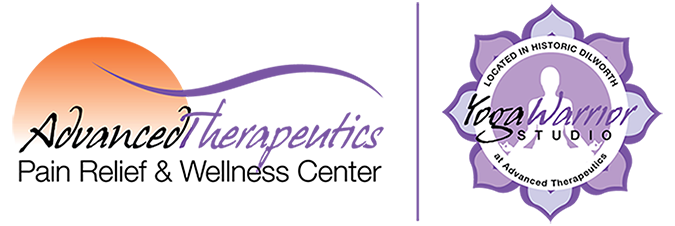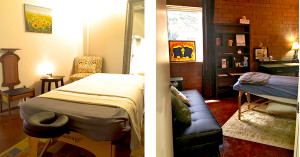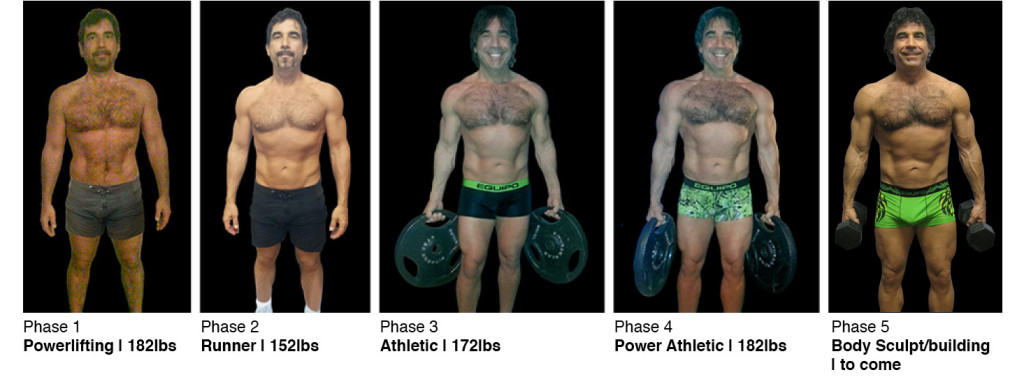Please purchase from our website. We will match any price we advertise on Groupon, Amazon, and Living Social. In addition, you will receive receive priority booking for your massage (you may even get a same day or next day appointment!) with no expiration date.
24-hours notice is required for all cancellations. All no-shows as well as cancellations made with less than 24 hours notice will be billed for the full amount of the appointment.
Please call or text 980-477-0588 for emergency booking/scheduling conflicts.
Neuromuscular/Clinical or Medical Massage Therapy
Therapy is based on the premise that true healing lies in treating the whole person, not just symptoms. The closer we come to balance the healthier and happier we are. Therapy assists the patient at becoming more integrated in their body through a comprehensive program of soft tissue manipulation techniques that aim to bring upon homeostasis between the nervous system (brain, spinal cord, nerves) and musculoskeletal system (muscles and bones).
This process is begun by, assessing the individual’s posture and musculo-skeletal system. This determines which muscle needs to be worked in order to lengthen or shorten it, thereby breaking the pain cycle. The procedure includes the application of pressure to the muscle, causing a release of stored tension. Ideally, the individual will become more aware of his body and how he contributes to his pain cycle. Clients will also learn the importance of maintaining relaxation, especially in highly stressful environments. With time and successive treatments, the muscle will regain its proper shape. In most cases, this therapy along with cleansing, stretching, and proper exercise can permanently alleviate chronic pain.
What can Neuromuscular Massage treat?
Balancing the body on the coronal, midsagittal, and transverse horizonal planes gives the body the optimal amount of energy to heal itself because so much energy isn’t wasted opposing gravity inefficiently, being blocked by nerve compression/entrapment, being wasted through faulty movements and ischemia, or by being drained by trigger points.
NMT is a whole body approach to treatment, so most people find that when they come for their back pain, we also help their knee pain, headaches, bladder dysfunction, and other problems they thought we couldn’t help or “weren’t a big deal”.
Some examples of conditions NMT is successful with are as follows: Headache, Migraine, Scoliosis, TMJ, Whiplash, Herniated Disk Syndrome, Back Pain, Neck Pain, Shoulder Pain, Hip Pain, Knee Pain, Foot Pain, Osteoarthritis, Plantar Faciitis, Carpal Tunnel Syndrome, Sciatica, Thoracic Outlet Syndrome, Shin Splints, Tendonitis, Spasms, Cramps, Strains, Postural Distortions and Fibromyalgia.
Manipulation of the soft tissues of the body can produce amazing and dramatic results — see for yourself!
How many treatments does a patient need? This question varies with each individual depending upon the severity of their condition, nutritional health, age, fitness, emotional health, the skill of the therapist, etc, etc. One person may need only one session, some may need 8 sessions. Generally after about 3 to 5 sessions the patient feels a great improvement in their health. When the problem is eliminated, the patient should have a treatment monthly to maintain their health and help prevent future imbalances from occurring.
For more information on pain free living please call 704-332-7700.
Deep Tissue Massage Therapy (Full Body)
Deep tissue massage involves slow strokes with deep pressure. The massage therapist applies pressure in the opposite direction of muscles that cause pains and aches. This type of massage benefits people who experience muscle tension, chronic inflammation, muscle pain and physical stress.
Benefits
Deep tissue massage offers several mental and physical benefits. This massage style relieves stress and promotes relaxation. Deep tissue massage also relieves pain and muscle stiffness associated with athletic injuries, arthritis, fibromyalgia, muscle spasms, carpal tunnel syndrome and whiplash.
Segmental Deep Tissue for Structural Integrety (Jeff Widmann)
Deep massage focusing on pain patterns and “cause and effect.” Deep massage following structural discrepancies such as “high” shoulder, “high or low” hip, rounded shoulders, and forward head positioning.These structural asymmetries or distortions cause pain or pain cysles that never seem to go away.
Myofascial Release
This effective hands-on technique provides sustained pressure into myofascial restrictions to eliminate pain and restore motion. The theory of Myofascial Release requires an understanding of the fascial system (or connective tissue). The fascia is a specialized system of the body that has an appearance similar to a spider’s web or a sweater.
Fascia is very densely woven, covering and interpenetrating every muscle, bone, nerve, artery and vein as well as all of our internal organs including the heart, lungs, brain and spinal cord. The most interesting aspect of the fascial system is that it is not just a system of separate coverings. It is actually one structure that exists from head to foot without interruption. In this way you can begin to see that each part of the entire body is connected to every other part by the fascia, like the yarn in a sweater.
Fascia also plays an important role in the support of our bodies, since it surrounds and attaches to all structures. These structures would not be able to provide the stability without the constant pull of the fascial system. In fact, our bones can be thought of as tent poles, which cannot support the structure without the constant support of the guide wires (or fascia) to keep an adequate amount of tension to allow the tent (or body) to remain upright with proper equilibrium.
In the normal healthy state, the fascia is relaxed and wavy in configuration. It has the ability to stretch and move without restriction. When we experience physical trauma, scarring, or inflammation, however, the fascia loses its pliability. It becomes tight, restricted and a source of tension to the rest of the body. Trauma, such as a fall, whiplash, surgery or just habitual poor posture over time and repetitive stress injuries has a cumulative effects. The changes they cause in the fascial system influence comfort and the functioning of our body. The fascia can exert excessive pressure producing pain or restriction of motion. They affect our flexibility and stability, and are a determining factor in our ability to withstand stress and strain.
The use of Myofascial Release allows us to look at each patient as a unique individual. Our one-on-one therapy sessions are hands-on treatments during which our therapists use a multitude of Myofascial Release techniques and movement therapy. We promote independence through education in proper body mechanics and movement, through the enhancement of strength, flexibility, and postural and movement awareness.
Medical/Clinical/Orthopedic Massage Therapy
Medical massage is performed with the intent of improving conditions or pathologies that have been diagnosed by a physician; a wide variety of modalities or procedures are utilized to focus the treatment based on the diagnosed condition. Advanced disciplines, such as neuromuscular therapy, CranioSacral Therapy (CST), myofascial release, lymphatic drainage, massage for cancer patients, orthopedic massage, etc., fall under medical massage disciplines.
Orthopedic massage specifically involves therapeutic assessment, manipulation, and movement of the locomotor soft tissues to reduce or eliminate pain or dysfunction. A unique multidisciplinary approach is utilized to restore structural balance throughout the body, which allows focus on prevention and rehabilitation of musculoskeletal dysfunctions, chronic pain and sports injuries. Primary modalities include functional assessment, myofascial release, neuromuscular therapy, scar tissue mobilization techniques, neuromuscular re-education, PNF stretching, strengthening, and specific client home-care protocols.
Swedish Massage Therapy
The term “Swedish Massage” refers to a variety of techniques specifically designed to relax muscles by applying light pressure to them, and rubbing in the same direction as the flow of blood returning to the heart. Used for relaxation and lymph issues.
Swedish massage was developed in the 1700’s by a Swedish doctor named Per Henrik Ling.
Purpose of Swedish Massage?
The main purpose of Swedish massage is to increase the oxygen flow in the blood and release toxins from the muscles.
Swedish massage shortens recovery time from muscular strain by flushing the tissues of lactic acid, uric acid, and other metabolic wastes. It increases circulation without increasing heart load. It stretches the ligaments and tendons keeping them supple and pliable. Swedish Massage also stimulates the skin and nervous system and soothes the nerves themselves at the same time.
It reduces stress, both emotional and physical, and is suggested in a regular program for stress management. It also has many specific medical uses.
Swedish Massage Techniques?
Swedish massage techniques include: long strokes, kneading, friction, tapping, percussion, vibration, effleurage, and shaking motions. The usual sequence of techniques are:
Effleurage: Gliding strokes with the palms, thumbs and/or fingertips
Petrissage: Kneading movements with the hands, thumbs and/or fingers
Friction: Circular pressures with the palms of hands, thumbs and/or fingers
Vibration: Oscillatory movements that shake or vibrate the body
Percussion: Brisk hacking or tapping
Passive and active movements: Bending and stretching
Benefits of Swedish Massage?
Swedish massage feels good, is relaxing and invigorating. It affects the nerves, muscles, glands, and circulation, while promoting health and well being.
Trigger Point Therapy
Trigger Points are tiny knots that develop in a muscle when it is injured or overworked. Commonly a cause of most joint pain, they are known to cause headaches, neck and jaw pain, low back pain, tennis elbow, and carpal tunnel syndrome.
Based on the discoveries of Drs. Janet Travell and David Simons in which they found the causal relationship between chronic pain and its source, myofascial trigger point therapy is used to relieve muscular pain and dysfunction through applied pressure to trigger points of referred pain and through stretching exercises. These points are defined as localized areas in which the muscle and connective tissue are highly sensitive to pain when compressed. Pressure on these points can send referred pain to other specific parts of the body.
Trigger Point Therapy can relieve muscular aches and pains in association with these areas. It can also assist with the redevelopment of muscles and/or restore motion to joints. Trigger Point Performance products are specifically designed to support the massage associated with Trigger Point Therapy. Trigger points are described as hyper-irritable spots in skeletal muscle that are associated with palpable nodules in taut bands of muscle fibers. Trigger point researchers believe that palpable nodules are small contraction knots and a common cause of pain. Compression of a trigger point may elicit local tenderness, referred pain, or local twitch response. The local twitch response is not the same as a muscle spasm. This is because a muscle spasm refers to the entire muscle entirely contracting whereas the local twitch response also refers to the entire muscle but only involves a small twitch, no contraction.
Acupressure
Acupressure is an ancient Chinese technique based on the principles of accupuncture, and involves the use of finger pressure (without the needles) on specific points along the body. It is is a way of accessing and releasing blocked or congested energy centres in the body. Chinese cultures believe the points to be junctures of meridian pathways that carry energy called chi. Western scientists have also mapped out and proven the existence of these points using electrical devices.
Acupressure massage therapy stimulates and activates the body’s own energies to help fight illness and restore harmony. Some of the Acupressure points are significant as they relate to a specific part of the body while others are more general in their effect. Various ailments such as tension and stress, aches and pains, arthritis or menstrual cramps can be alleviated.
Acupressure can also be used for general preventative health care.
What is the Purpose of Acupressure?
The purpose of acupressure is to stimulate the body’s own recuperative powers by stimulating the various points on the body. The stimulation removes energy blockages by diffusing the toxic build-up that accumulates in the muscle tissue. The accumulation of toxins causes stiffness throughout the body. Stiffness in muscles puts abnormal pressure on nerves, and blood and lymph vessels. The pressure on blood and lymph vessels affect both skeletal systems and internal organ functioning.
How is Acupressure Performed?
Acupressure is usually given in a similar fashion to traditional massage.
Points on the body are massaged using finger or thumb, and sometimes a blunt object, in a fairly rapid circular motion with a medium pressure. Massages last between 5 and 15 minutes. Some of the most common techniques are:
Rubbing, Kneading, Percussion and Vibration. Fingers, hands, elbows, knees and feet are often used to massage other parts of the body.
Acupressure can be performed sitting, standing or lying down.
Acupressure can help alleviate:
Pain, headaches, migraines, insomnia, depression, toothache, dizziness, menstrual pain, digestive disorders including diarrhea and constipation, nausea, morning sickness, motion sickness, stress and tiredness.
In all cases, such massage techniques are employed in collaboration with other appropriate medical care.
Yoga Therapy
Yoga therapy is a self-empowering process, where the care-seeker, with the help of the Yoga therapist, implements a personalized and evolving Yoga practice, that not only addresses the illness in a multi-dimensional manner, but also aims to alleviate his/her suffering in a progressive, non-invasive and complementary manner.
Depending upon the nature of the illness, Yoga therapy can not only be preventative or curative, but also serve a means to manage the illness, or facilitate healing in the person at all levels.
Are you ready to finally transform your body into the shape and state of health you deserve? Have you decided it’s time to stop thinking about it and start doing something about it? Let’s get started!
Jeff Widmann, owner of Advanced Therapeutics, is a Medical Massage Therapist, Registered and Certified Yoga Instructor and Personal Fitness Professional who has been practicing since 1994. With personal experience in this tremendous transformation, he is ready to take you through 5 short phases, step by step, and will not stop until you reach your goals.
Jeff Widmann: My Personal Journey
Phase 1: Powerlifting: 182 lbs
Goal: To see how strong I could get. 2 years of heavy lifting
Body Fat Ratio: 24%*
Exercise: 3x per week, 1-1/2 hrs
Weights: As heavy as I could lift, no more than 6 reps/set
Bench: 315 lbs; Squats: 505 lbs
Cardio: none
Nutrition: no limits
Goal reached
New goal: To drop as much weight and body fat as possible and maintain athletic build
Phase 2: Runner: 152 lbs (Goal achieved in 6 months)
Body Fat Ratio: 8%*
Exercise: 5x per week
Weights: 1 hr: 12-15 reps/set
Bench: 185 lbs; Squats: 315 lbs
Cardio 5x per week: 1 mile run, 10 laps in pool
Nutrition: Whey protein drink every 2 hrs
Goal reached
New goal: To increase strength and pack on muscle with
minimum body fat increase
Phase 3: Athletic: 172 lbs (Goal reached after 3 months)
Body Fat Ratio: 12%*
Exercise: 5x per week, 1-1/2 hrs:
Weights: 12 reps/set
Bench: 270 lbs; Squats: 405 lbs
Cardio 5x per week: :30 min treadmill
Nutrition: Whey protein drink every 2 hrs, evening meal with ice cream
Goal reached
New goal: Maintain strength, add muscle with minimum body fat increase
Phase 4: Power Athletic: 182 lbs (Goal reached after 3 months)
Body Fat: 12%*
Exercise: 5x per week
Weights: 1-1/2 hrs, 10-12 reps/set
Bench: 270 lbs; Squats: 450 lbs
Cardio: None
Nutrition: Whey protein drink every 1-1/2 hours, evening meal
New goal: To gain as much muscle as possible in 3 months while dropping fat %
Phase 5: Bodysculpting/building: ___ lbs
Body Fat: ____%*
Exercise: 6x per week
Weights: 2 hrs: 10-12 reps/set
Bench: ____lbs Squats: ____lbs
4x week weights
2x Plyometrics
Nutrition: Whey protein drink every hour, evening meal
Make a commitment to yourself!
Personal Training: $65 per session click to purchase
$25 off your first session (only $40)!
Personal Training is focused on Structural Integrity
PersonalTrainingIntakeForm: Click, fill out, print and bring to your first appointment.
Jeffrey Widmann LMBT, CPT, E-RYT #1757, owner and operator, is a Medical Massage Therapist, Registered and Certified Yoga Instructor and Personal Fitness Professional. He has been a Massage Therapist / Bodyworker since 1994.


